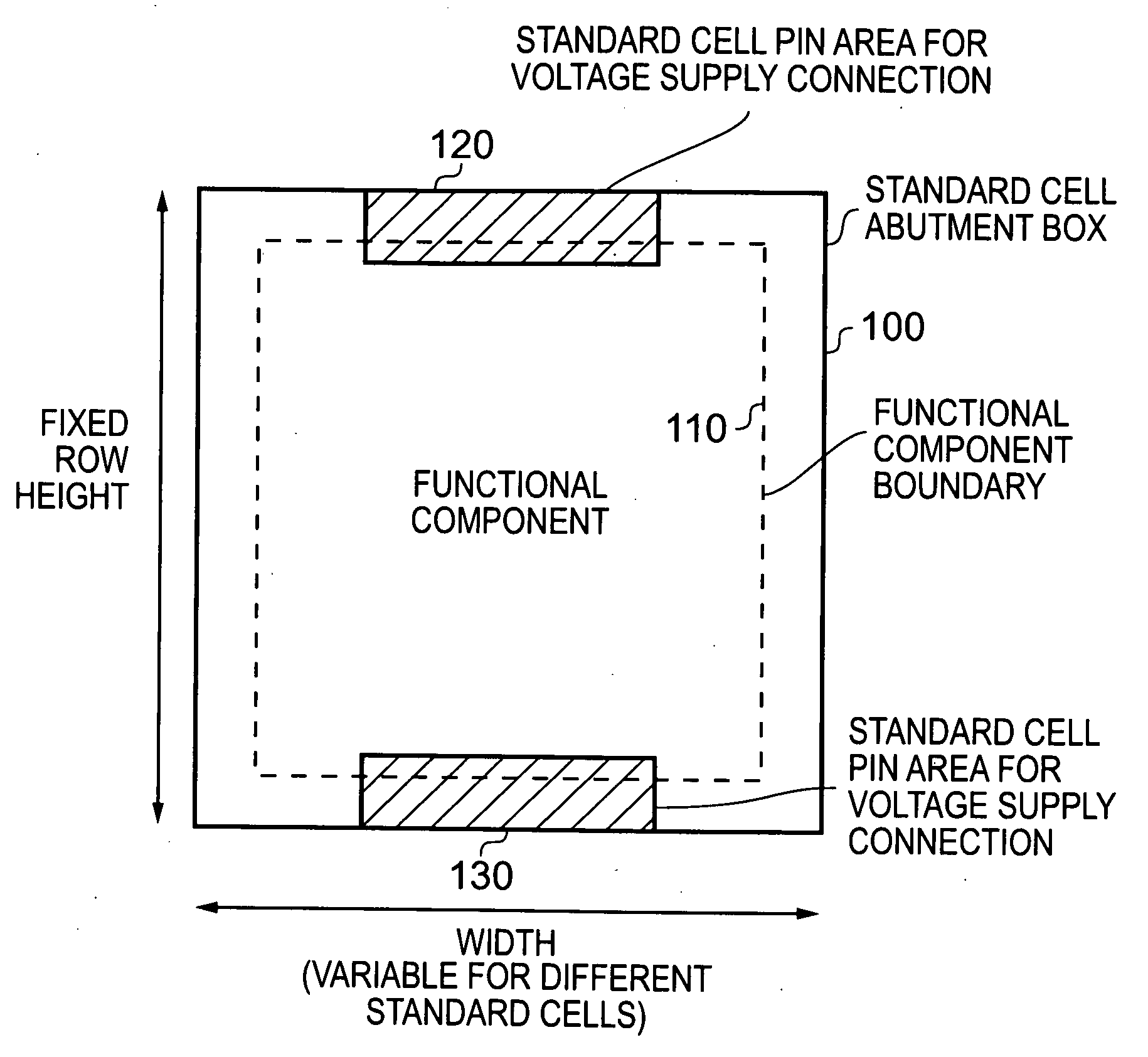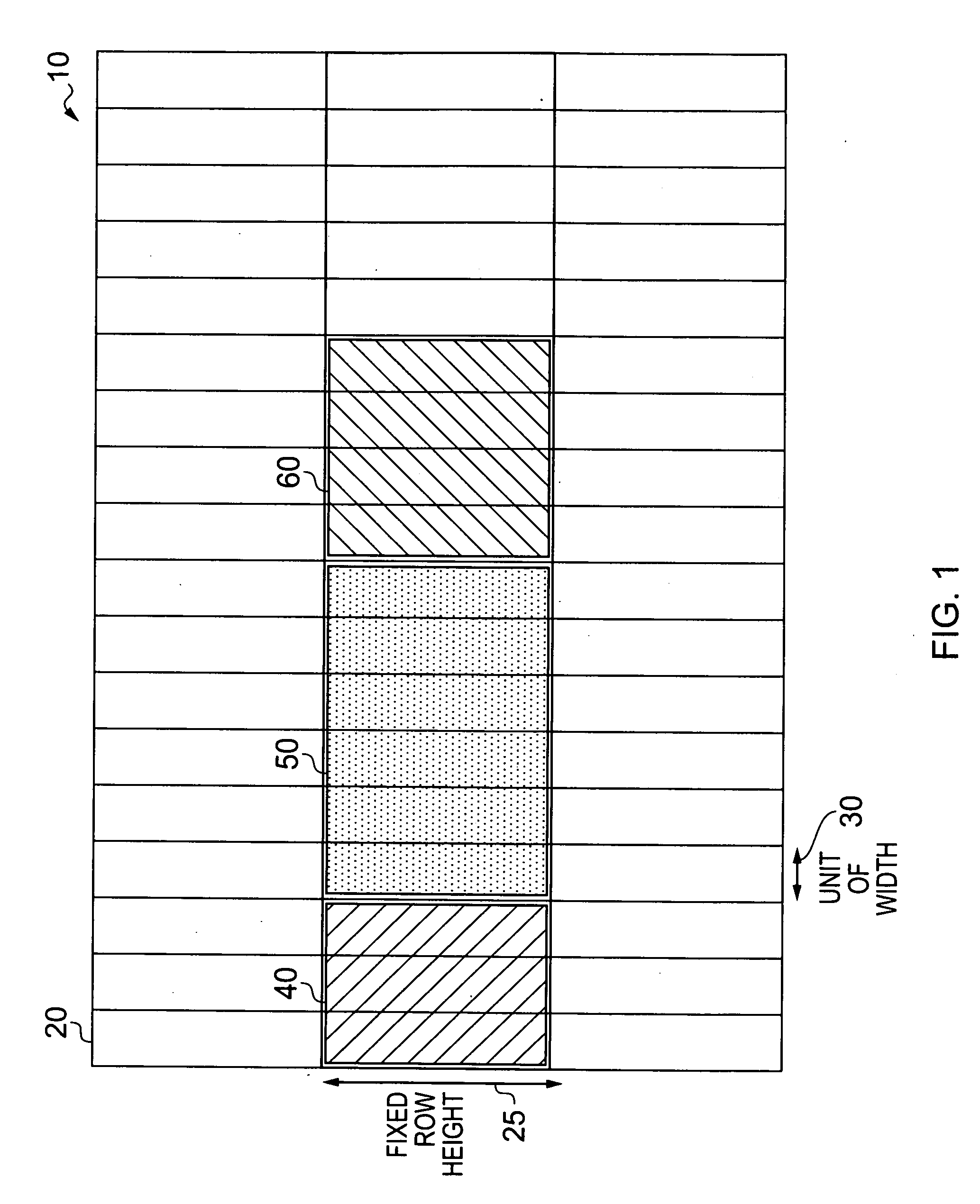Integrated circuit, method of generating a layout of an integrated circuit using standard cells, and a standard cell library providing such standard cells
a technology of integrated circuits and standard cells, applied in the direction of logic circuits, instruments, electric digital data processing, etc., can solve the problems of lack of flexibility in approach, inability to use typical performance critical design techniques, example central processing units, etc., and achieve the effect of simple and space-efficient implementation
- Summary
- Abstract
- Description
- Claims
- Application Information
AI Technical Summary
Benefits of technology
Problems solved by technology
Method used
Image
Examples
Embodiment Construction
[0055]FIG. 1 schematically illustrates a portion 10 of an integrated circuit layout, the portion shown having three rows of a fixed row height 25. Each row comprises a series of blocks 20 with a fixed unit of width 30. Each standard cell in the standard cell library is arranged to have a height equal to the row height 25, and to have a width which can vary between cells but is a multiple of the unit width 30. Standard cells are then placed in to each row having regards to the required circuit elements and connections between those circuit elements required by the integrated circuit, with the various standard cells arranged to abut against one another. Hence, for the purpose of illustration, three standard cells 40, 50, 60 are shown located within one of the rows. Each cell has an abutment box whose height is equal to the row height, and whose width is a multiple of the unit width 30, and when placed in to a particular row, the abutment box of a standard cell abuts against the abutme...
PUM
 Login to View More
Login to View More Abstract
Description
Claims
Application Information
 Login to View More
Login to View More - R&D
- Intellectual Property
- Life Sciences
- Materials
- Tech Scout
- Unparalleled Data Quality
- Higher Quality Content
- 60% Fewer Hallucinations
Browse by: Latest US Patents, China's latest patents, Technical Efficacy Thesaurus, Application Domain, Technology Topic, Popular Technical Reports.
© 2025 PatSnap. All rights reserved.Legal|Privacy policy|Modern Slavery Act Transparency Statement|Sitemap|About US| Contact US: help@patsnap.com



